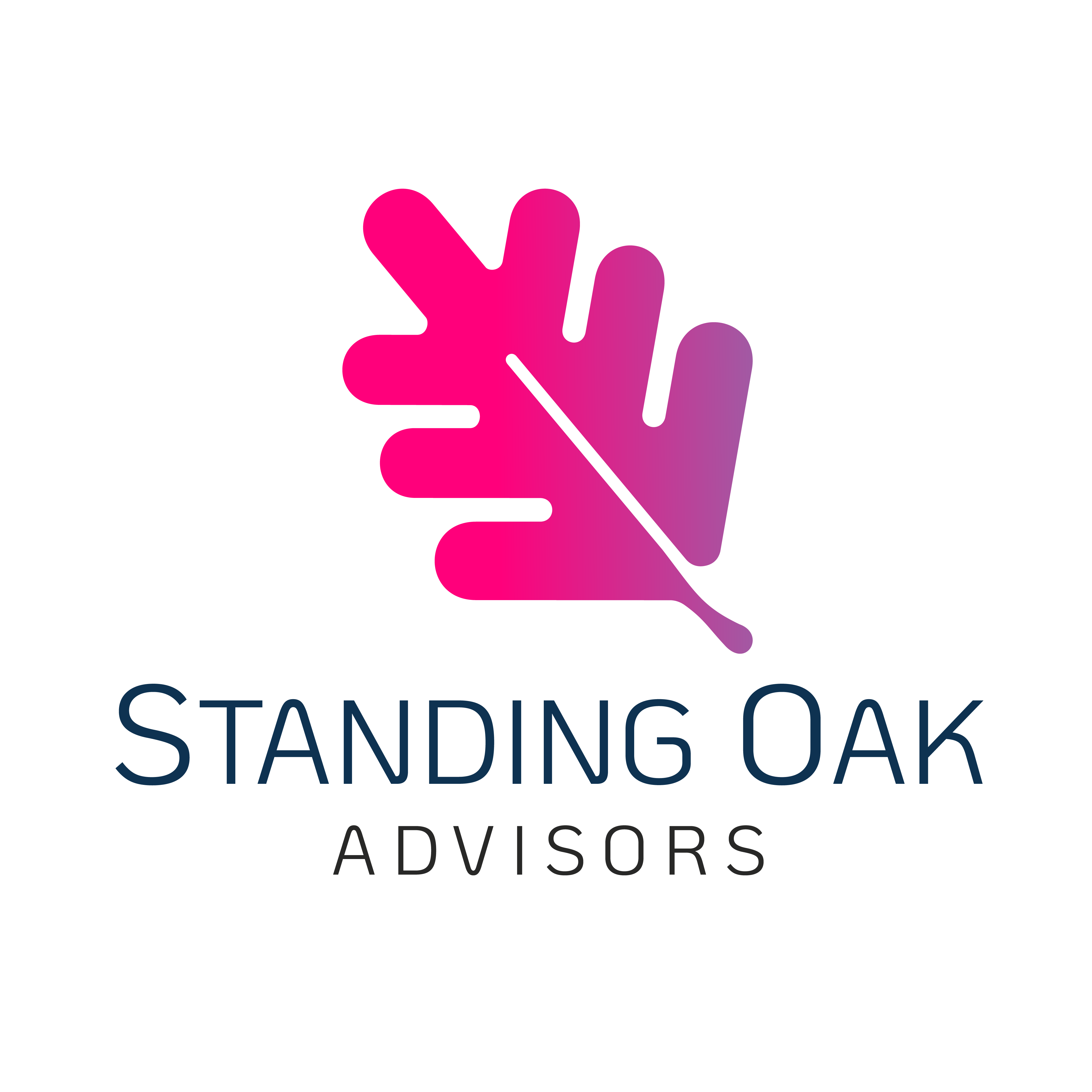succession planning Orange County

Understanding Succession Planning
At Standing Oak Advisors, our journey with clients often begins at the crossroads of life's uncertainties and the promise of a secure tomorrow. Succession planning Orange County is not just a transaction; it's a transformational process that secures a business's legacy and a family's future. From our vantage point in Orange County, we've witnessed the crucial role succession planning plays in safeguarding the survival and continuity of local businesses.
Why It Matters
Imagine a well-oiled machine that runs smoothly day in and day out. Now, imagine one of the crucial gears is suddenly missing. The machine stutters, struggles, and eventually, halts. For many businesses, losing a key member without a plan is akin to this scenario. Succession planning is the blueprint that ensures the machine not only keeps running but also adapts and evolves.
In our experience, businesses in Orange County thrive on innovation and agility. Having a robust succession plan means ensuring that this spirit continues, irrespective of who's at the helm. It's about creating a legacy that transcends individual contributions while ensuring that the business remains in capable hands.
Key Components of a Succession Plan
Leadership Identification
Identifying potential leaders is a pivotal first step in succession planning. At Standing Oak Advisors, we emphasize a thoughtful approach that assesses not just the technical skills but also the leadership qualities of potential successors. It's about foreseeing who can not only steer the ship but also navigate the storms.
Transition Strategy
How do you ensure a smooth transition that minimizes disruptions? A solid strategy accounts for the transfer of knowledge, skills, and even company culture. Our approach involves creating a roadmap that outlines the stepping stones to successful leadership transitions, factoring in both immediate and long-term needs.
Steps in Succession Planning
Succession planning in Orange County is a multifaceted process that involves several critical steps. These include understanding the business's needs, identifying potential successors, developing their skills, and finally, implementing the plan. Let's delve deeper into each of these steps.
Understand Business Needs
First and foremost, we dive into understanding the unique needs and challenges of the business. This involves analyzing the company's structure, market position, and future goals. By grasping these foundational aspects, we can tailor a succession plan that aligns with the business's vision and objectives.
Identify Potential Successors
Identifying the right people to take over roles is crucial. We look within the organization for individuals who not only have the skills and experience but also embody the company's values. In some cases, this might also involve looking externally to find the perfect fit.
Challenges and Solutions in Succession Planning
Succession planning in Orange County is not without its challenges. However, with the right approach, these can be transformed into opportunities.
Resistance to Change
Change is often met with resistance. In our practice, we've seen the importance of communication and transparency in overcoming these hurdles. It's about fostering a culture that views succession planning as a positive step towards future-proofing the business.
Finding the Right Fit
Finding someone who can seamlessly step into a leadership role isn't always straightforward. We advocate for a comprehensive evaluation process that goes beyond resumes, looking at leadership potential, cultural fit, and long-term vision.
Practical Tips for Success
At Standing Oak Advisors, we believe in equipping our clients with practical advice to navigate the complexities of succession planning.
- Start early: Succession planning should not be a reactive process. Begin the conversation early to allow ample time for planning and implementation.
- Involve key stakeholders: Succession planning impacts many people. Ensure that key stakeholders are involved in the process to gain their insight and buy-in.
- Focus on development: Developing internal talent is a powerful way to ensure continuity. Invest in training and mentorship programs to build a pipeline of capable leaders.
Personal Insights and Anecdotal Evidence
Through my years at Standing Oak Advisors, I've had the privilege of guiding numerous businesses in Orange County through their succession planning journey. One particularly memorable experience was with a family-owned business that was on the brink of collapse due to unforeseen circumstances. Through a carefully crafted succession plan, not only were we able to ensure the business's survival, but we also set the stage for its future growth. It was a powerful reminder of the resilience and adaptability at the heart of Orange County's business community.
Why Partner with Standing Oak Advisors?
At Standing Oak Advisors, we're more than just advisors; we're partners in your journey towards securing your business's future. Our approach is rooted in a deep understanding of the unique landscape of Orange County and a commitment to tailored, personal solutions. Succession planning in Orange County is a journey we are deeply passionate about, and we invite you to embark on this journey with us.
Succession planning in Orange County is an essential strategy for any business looking to secure its future. At Standing Oak Advisors, we understand the complexities and nuances of this process. By focusing on tailored strategies, involving key stakeholders, and addressing challenges head-on, we help businesses in Orange County lay the groundwork for a prosperous future. Let us help you weave the legacy of your business into the fabric of Orange County's vibrant business community.

What are the five critical steps of a succession plan?
Embarking on a succession planning journey, particularly in Orange County, involves a methodical approach that aligns a business's long-term goals with its leadership transition strategy. The first critical step is understanding the specific needs and future objectives of the business. This vital insight lays the groundwork for everything that follows. From there, we move to the identification of potential successors, which is not limited to assessing current talent within the organization but also considering external candidates who embody the company's values and vision. The third step revolves around developing these candidates, through mentorship and targeted training, to ensure they're ready to lead. After preparation comes the implementation of the succession plan, which involves a phased transition to new leadership, ensuring stability and continuity. Lastly, an often overlooked but crucial step is the review and adjustment of the plan to reflect changes in the business environment or organizational structure. Each of these steps requires careful consideration and a personalized touch, especially in the diverse business landscape of Orange County.
What are the 4 models of succession planning?
In our practice at Standing Oak Advisors, we've found that succession planning can be broadly categorized into four models. The Simple Replacement Planning model focuses on identifying immediate replacements for key positions without much long-term strategizing. Then there's the Strategic Leadership Development model, which is more forward-thinking, emphasizing the development of a talent pipeline to fill leadership roles as they arise. The Emergency Succession Plan is crucial for unexpected circumstances, ensuring there's a swift transition with minimal disruptions. Lastly, the Dynamic Succession Planning model, which I find particularly relevant for businesses in Orange County, incorporates elements of agility and flexibility, allowing organizations to adapt their succession strategies in response to changing market dynamics. Each model has its place, but the choice depends on the specific needs and circumstances of the business.
What is the first thing to do for succession planning?
The first and most critical step in succession planning is to conduct a thorough assessment of your business's current and future needs. It's akin to charting a course before setting sail. This involves understanding the strategic direction of the business, identifying key roles that are crucial for its success, and recognizing the specific competencies and qualities needed in those roles. By starting with this comprehensive evaluation, we set a strong foundation for a succession plan that not only addresses immediate needs but also aligns with the long-term vision of the business. This approach has served our clients in Orange County well, enabling them to navigate transitions seamlessly and with confidence.
Is succession planning worth it?
Absolutely, without a doubt. Succession planning is not merely a precaution; it's a strategic necessity. It ensures that a business can continue to thrive in the face of leadership transitions, unexpected departures, or market changes. Particularly in Orange County's dynamic business environment, having a robust succession plan means you're not just safeguarding the business's present but also securing its future. Through our work at Standing Oak Advisors, we've seen firsthand how a well-crafted succession plan can transform potential vulnerabilities into opportunities for growth and renewal. It's an investment in the business's legacy and an essential component of comprehensive wealth planning.
What are common challenges in succession planning, and how can they be overcome?
One of the most common challenges we encounter in succession planning, especially in a competitive market like Orange County, is resistance to change. Whether it's from the current leadership, employees, or even the potential successors themselves, change can be daunting. The key to overcoming this challenge is through fostering an organizational culture that values transparency, communication, and development. By involving key stakeholders early in the planning process, providing clear pathways for development, and maintaining open lines of communication, resistance can be minimized. Another significant challenge is finding the right fit for leadership roles. This isn't just about skills and experience; it's about finding individuals who align with the company's values and vision for the future. A comprehensive evaluation process, coupled with a commitment to developing internal talent, can greatly enhance the chances of a successful transition.
What practical advice can you offer businesses starting their succession planning?
For businesses at the beginning of their succession planning journey, especially here in Orange County, my most practical advice is to start early and think broadly. Succession planning is not a task to be rushed or confined to the C-suite. It's a strategic initiative that should involve stakeholders at various levels and areas of the business. Begin by defining the criteria for potential successors, considering not only technical skills but also leadership qualities and cultural fit. Don't overlook the value of external perspectives, whether through professional advisors or industry peers, as they can offer invaluable insights. And remember, succession planning is a dynamic process; it should be revisited and adjusted as the business evolves. By taking a proactive, inclusive, and flexible approach, businesses can ensure a legacy of leadership that carries their vision forward.
Resources
- Succession Planning Overview - Society for Human Resource Management
- Succession Planning Toolkit - Penn State Extension
- Leadership Identification Strategies - HR People + Strategy
- Transition Strategy Guide - Business.com
- Challenges in Succession Planning - Forbes Business Council
- Practical Succession Planning Tips - Inc.com
